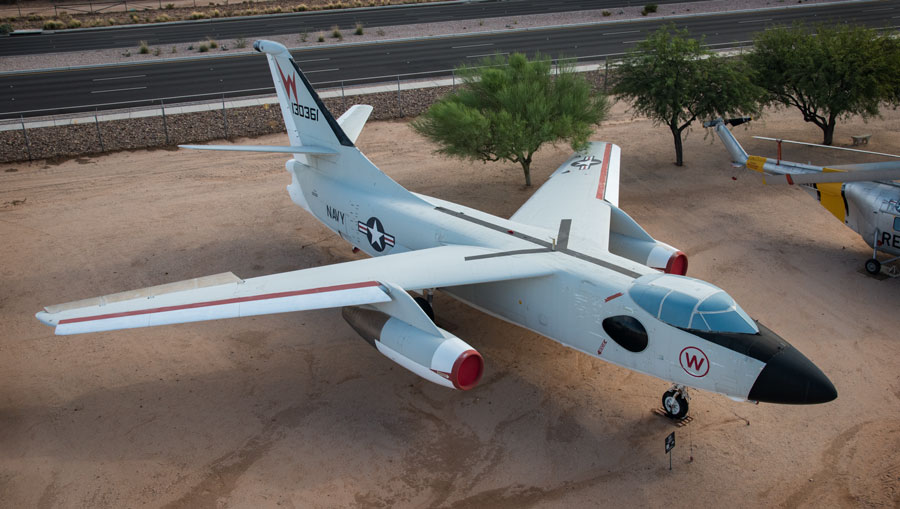✈️ Douglas A-3 Skywarrior — Review
🧩 Overview
Nicknamed “The Whale” for its massive size, the Douglas A-3 Skywarrior was the largest and heaviest carrier-based aircraft to enter regular service in U.S. Navy history. Originally built in the early 1950s as a nuclear-capable strategic bomber, the A-3 eventually evolved into a highly versatile platform for reconnaissance, electronic warfare, tanker support, and crew training.
Despite its bulk, the Skywarrior successfully operated from aircraft carriers — a major engineering feat — and served for more than 30 years, from the Korean War era through the Vietnam War and into the Cold War.
⚙️ Specifications
-
First flight: October 28, 1952
-
Introduced: 1956
-
Retired: 1991
-
Crew: 3 (pilot, bombardier/navigator, electronic countermeasures operator)
-
Length: 76 ft 4 in (23.3 m)
-
Wingspan: 72 ft 6 in (22.1 m)
-
Height: 22 ft 9 in (6.9 m)
-
Max speed: ~610 mph (980 km/h)
-
Range: ~2,100 miles (3,380 km)
-
Engines: 2 × Pratt & Whitney J57 turbojets
-
Max takeoff weight: Over 80,000 lbs (36,000 kg)
🛠 Design & Features
-
Folding wings and tail for carrier storage
-
Twin-engine, straight-wing layout
-
No ejection seats — the crew had to bail out through a hatch, which was extremely risky
-
Weapons bays originally held nuclear bombs; later versions carried refueling gear, ECM pods, or camera systems
-
Advanced for its time in size, avionics, and load capacity
🔧 Variants
The A-3 was incredibly versatile, with many variants, including:
-
A-3B: Standard bomber
-
KA-3B: Aerial tanker (for carrier-based refueling)
-
EA-3B: Electronic intelligence & jamming (used by the Navy and NSA)
-
RA-3B: Photo-reconnaissance
-
TA-3B: Crew trainer
The EA-3B variant, in particular, remained in service well into the 1980s, supporting sensitive intelligence missions — including during the Gulf of Sidra incident and the Cold War’s peak.
📜 Combat & Operational Use
-
Never used in nuclear combat, but participated in conventional roles during the Vietnam War
-
Extensively used for aerial refueling, especially during long-range naval operations
-
Played a crucial role in SIGINT (signals intelligence) for the Navy and NSA
-
Despite its ungainly appearance, it had excellent flight characteristics for such a heavy plane
🧱 Strengths
-
Massive range and payload for a carrier-based aircraft
-
Extremely reliable and adaptable
-
Supported multiple mission types over decades
-
Played a huge role in electronic warfare and intelligence
⚠️ Weaknesses
-
No ejection seats made emergency situations deadly
-
Very large and heavy — only viable on big-deck carriers
-
Vulnerable to modern air defenses if flown unescorted
-
Not supersonic — it relied on altitude and tactics rather than speed
🏁 Final Verdict
| Category | Rating (★ out of 5) |
|---|---|
| Carrier Suitability | ★★★★☆ |
| Versatility | ★★★★★ |
| Combat Effectiveness | ★★★☆☆ |
| Legacy & Impact | ★★★★☆ |
| Cool Factor | ★★★★☆ |

Comments are closed